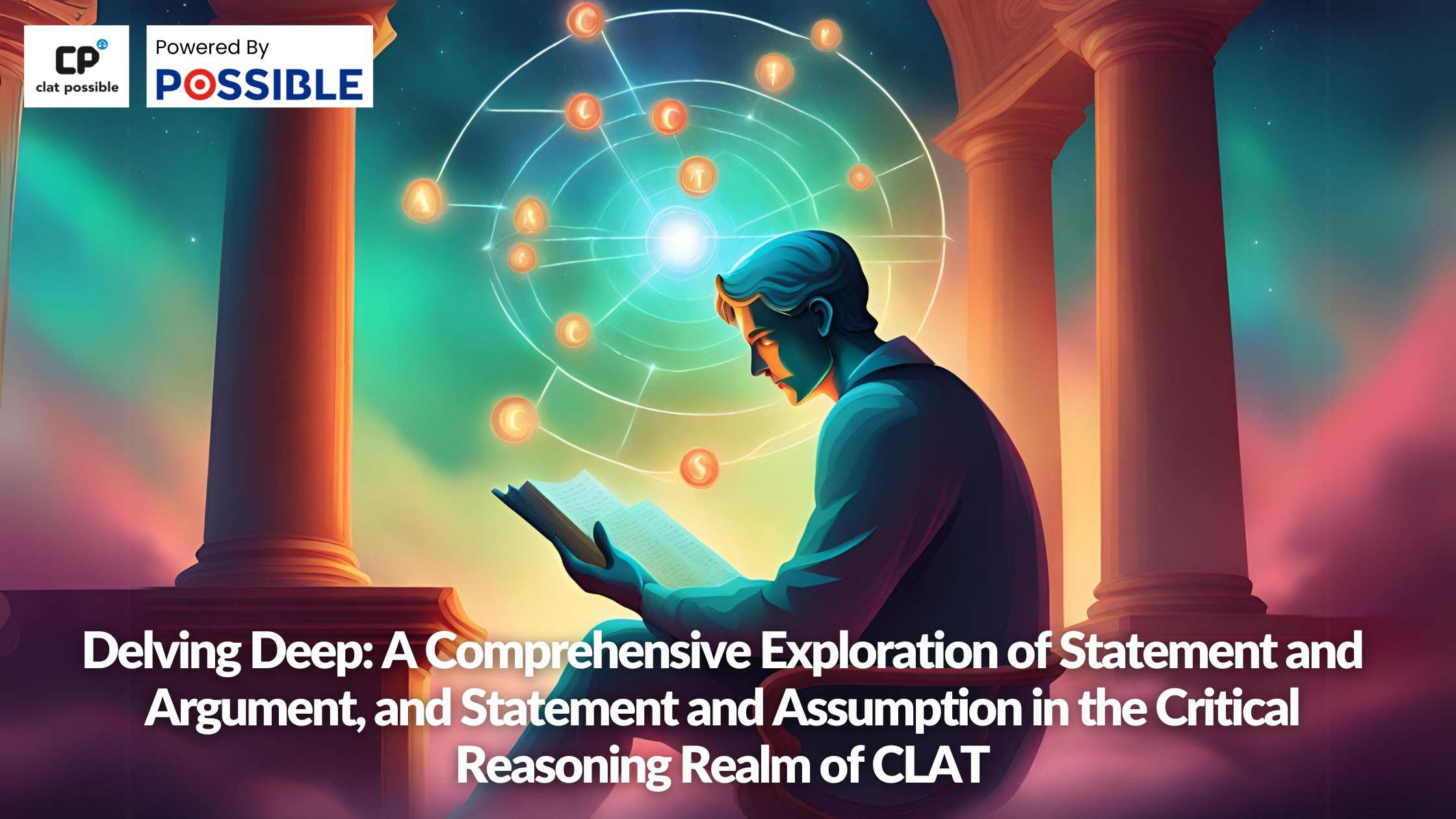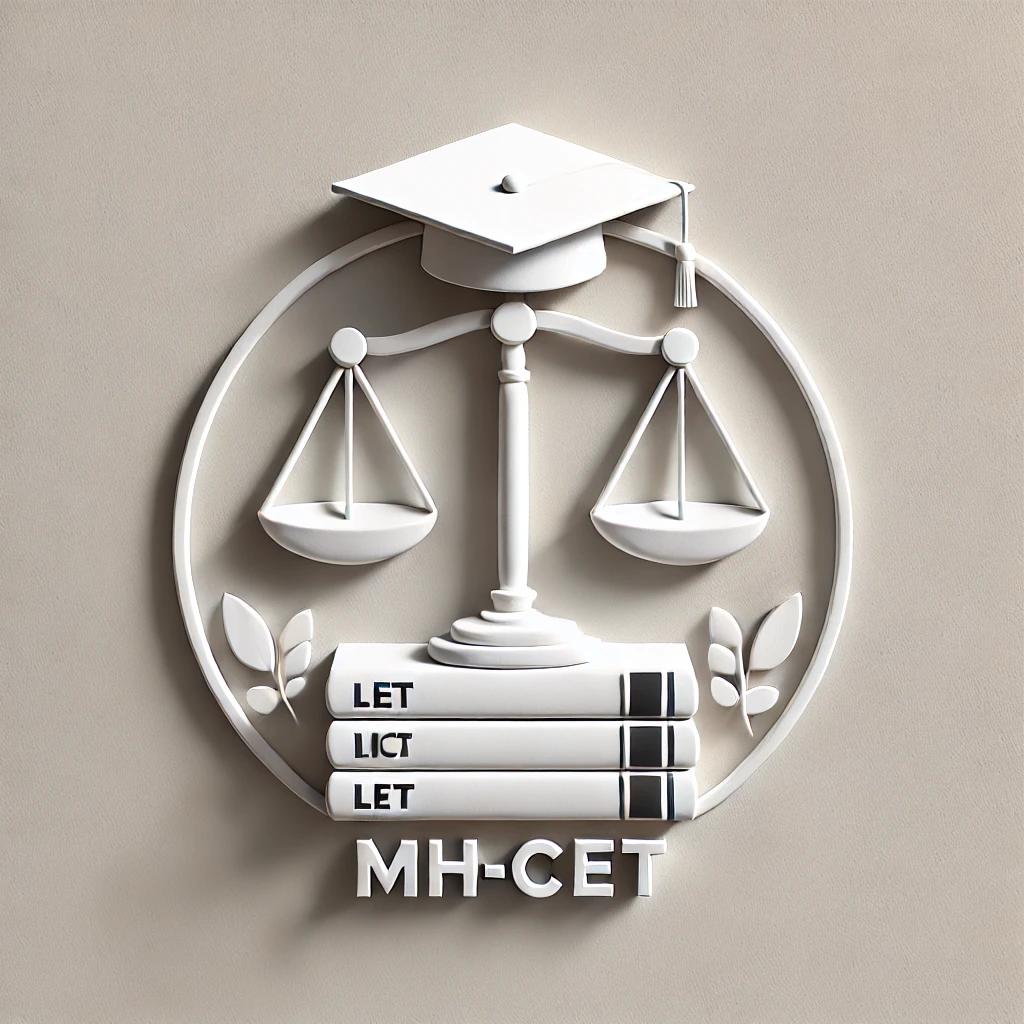Delving Deep: A Comprehensive Exploration of Statement and Argument, and Statement and Assumption in the Critical Reasoning Realm of CLAT
By I Oct 21, 2023
 The landscape of the Common Law Admission Test (CLAT) is vast and varied, presenting myriad challenges to its aspirants. At the heart of these challenges lies the enigmatic Critical Reasoning section, an amalgamation of logic, wit, and analytical finesse. Two pivotal components of this section — the statement and argument, and statement and assumption questions — are particularly renowned for their complexity. To provide you with a robust foundation and an arsenal of strategies, we've curated an exhaustive guide brimming with insights and nuances.
The landscape of the Common Law Admission Test (CLAT) is vast and varied, presenting myriad challenges to its aspirants. At the heart of these challenges lies the enigmatic Critical Reasoning section, an amalgamation of logic, wit, and analytical finesse. Two pivotal components of this section — the statement and argument, and statement and assumption questions — are particularly renowned for their complexity. To provide you with a robust foundation and an arsenal of strategies, we've curated an exhaustive guide brimming with insights and nuances.
Statement and Argument: An Anatomy
In the realm of critical reasoning, a statement is more than just words – it's a declaration, a perspective. The subsequent arguments either echo in its support or dissent vociferously against it.
In-depth Strategies:
Unraveling the Statement's Tapestry: Every word in the statement counts. Scrutinize it closely, paying heed to subtle undertones and overt emphases to grasp its holistic meaning.
An Oasis of Objectivity: It's imperative to approach each argument devoid of personal prejudices. Gauge its intrinsic merit and the coherency of its logic in relation to the statement.
The Pillars of Evidence: A cogent argument is invariably anchored in empirical evidence. Whether it's a nugget of statistical data, a chapter from history, or tangible examples, these anchors bolster the argument's legitimacy.
The Subtleties of Statement and Assumption:
Assumptions, often elusive, serve as the linchpins between statements and their conclusions. They silently undergird the statement, ensuring its logical coherence.
In-depth Strategies:
A Contextual Compass: An apt assumption seamlessly aligns with the statement's thematic contour. If it introduces an alien idea, it's prudent to reconsider its validity.
The Art of Reading Between the Lines: Assumptions often lurk in the interstices of statements. Cultivating a keen, discerning eye can help unveil these hidden premises.
The Perils of Extremities: Assumptions that resonate with extremities or blanket generalizations should be treated with caution. Their relevance is often suspect.
Universal Blueprints for Mastery:
The Crucible of Practice: Like forging steel, consistent engagement with such questions tempers your analytical acumen, refining it to a razor-sharp edge.
The Sands of Time: Every tick of the clock matters in CLAT. Simulated timed sessions can be invaluable in calibrating and enhancing your question-solving velocity.
The Sanctum of Serenity: A tranquil mind can traverse the labyrinth of critical reasoning with agility. Techniques like meditation or deep breathing can be instrumental in ensuring mental equilibrium.
The World as Your Classroom: Beyond textbooks and mock papers, real-life scenarios abound with opportunities to dissect arguments and assumptions. Engage in debates, discussions, and critical evaluations to fine-tune your analytical faculties.
FAQs:
How do arguments and assumptions diverge in their roles within critical reasoning?
Arguments are the vocal chords of a statement, either resonating in harmony or dissenting in discord. Assumptions, on the other hand, are the silent heartbeat, vital yet unspoken, ensuring logical vitality.
In the vast expanse of CLAT, how predominant are these questions? The prominence of these questions can oscillate annually, but they invariably command a significant chunk of the critical reasoning terrain.
In the face of uncertainty, to guess or to abstain? The current structure of CLAT is devoid of punitive measures for incorrect answers. Thus, after judiciously narrowing down options, venturing an educated guess can be propitious.
Are there advanced reservoirs of practice for these concepts? Beyond the canonical CLAT materials, critical reasoning compendiums designed for exams like GMAT or LSAT can offer a deeper dive into the intricacies of these topics.
How can one extricate personal biases during the answering process? A relentless commitment to objectivity, coupled with awareness and self-reflection, can aid in sidelining personal beliefs, ensuring a laser focus on the intrinsic logic of the questions.
Conclusion:
Navigating the intricate alleys of statement and argument, and statement and assumption within CLAT's critical reasoning domain is akin to a grand intellectual odyssey. With tenacity, rigorous practice, and the strategies enumerated above, this odyssey can culminate in triumphant success, propelling aspirants into the hallowed halls of premier law institutions.
For more informative blogs on CLAT 2024 preparation, Click Here!



